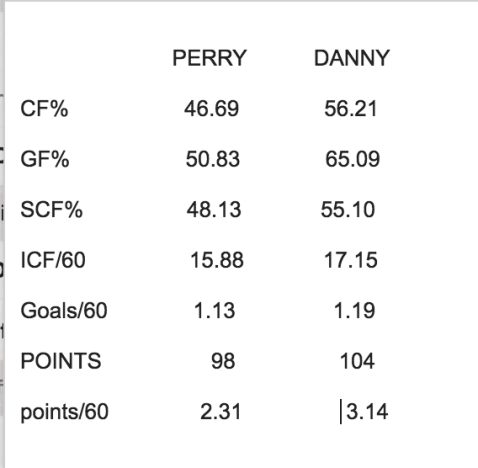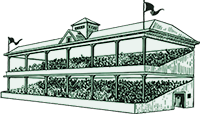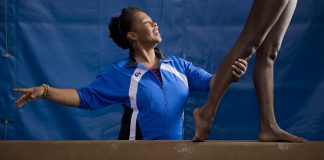Daniel and Henrik Sedin — two of the greatest players to ever wear Canucks colours — hung up their skates this week, retiring as two of the best in NHL history to never win a Stanley Cup, while also having a legacy marred with trappings of many who never quite fully embraced them.
The twins were at the centre of a magical evening in their penultimate game on Thursday in Vancouver, producing a combined 4 points, including the overtime winner. During the game, they received at least six standing ovations and the sound in Rogers Arena rivalled anything we will hear in June. This brought the expected rush of emotions for myself — admittedly a lifelong Canucks fan — who was just 9 years old when they were drafted. Initially, I wanted this piece added to the pile of heartfelt appreciation for them that’s poured out since they announced their retirement. However, there’s one feeling that rose to the surface throughout my reflection on their career that I just couldn’t shake: no players of their calibre, in the history of hockey, have been disrespected, undervalued, and ridiculed to the extent that they were.
Now, there will be a portion of you out there who read my premise and immediately paint me as a jaded, sour fan of a team who‘s never won a championship in their 47 season existence. To that, I say that:
1) You’re probably partially correct.
2) That doesn’t detract from my forthcoming points.
The reality is, the Sedins proved throughout their career to be a litmus test for the absolute worst characteristics of the NHL and the hockey world as a whole. We saw it repeatedly, as ugly head after ugly head was reared with people attempting to reconcile their long-held beliefs about how hockey ‘should be played’ with the unique players playing it before them.
What was the heart of the problem with the Sedins? It certainly wasn’t on the surface. If you had a child, these two gentlemen embodied everything you could hope they’d be. They were tough without being violent. They were exquisitely skilled. They were incredibly intelligent, thinking the game far deeper and faster than their opponents. They were selfless and more than willing to take a bullet for their teammates (as they did countless times, especially in the past few seasons representing a moribund squad). They had a legendary work ethic, and they were also multi-million dollar philanthropists in their community. Any dolt with a GED would tell you, that sounds like a fantastic human being. Yet, for a large part of the public, the predominant way of treating them was with ridicule or disdain. So what was it?
To paraphrase Jim Jefferies: They were foreign, and that pissed the fuck out of most Canadians.
In Canada, we’ll pretend we’re supportive and open-minded. We’ll even let you win us over when you’re good to us. But don’t for a second kid yourself into believing that non-Canadian hockey players are afforded the same reverence and leeway as a lesser talent that’s homegrown. The Cherry-esque rhetoric of Canadian hockey supremacy has leaked into every corner of our hockey culture, and as a result, one of the most Canadian characteristics is that we hate anyone that proves better than us at ‘our game’.
The twins were a case study in this. While they busted their asses for a Canadian squad, they were as un-Canadian as players can be. They didn’t trash talk. They didn’t have a physical edge to their game. They weren’t powerful skaters, didn’t have mammoth shots, or regularly mix it up in scrums. They were all finesse, all the time. This led to all sorts of venomous vitriol that went on for far too long. We even had useless troglodytes like Dave Bolland go on radio and call them “sisters”, feeling entitled to do so because apparently being from London, Ontario and having Patrick Kane win a Stanley Cup for you gives you more credibility than winning the goddamn Hart trophy.
While we’re on the topic of the Hart trophy, let’s talk about the utterly shameful decision by the PHWA (Professional Hockey Wankers…I mean, Writers Association) to give the Hart to Corey Perry in 2011. Perry got the award for one reason, and one reason only — he was ‘one of us’. They liked his style of play, and he was a good Canadian boy. How else do you explain Perry winning the vote comfortably with a stat split like this?



Thankfully, the players got it right, giving Daniel the Ted Lindsay Award that same year. But this was a telling glimpse into the perception many in the media had of the Sedins.
This same bias reared its ugly head at the peak of the Sedins’ career: the 2011 Stanley Cup Final. The twins entered the Finals coming off of the greatest series of hockey they’d ever played, putting up a combined 18 points in 5 games, destroying the Sharks like it was Jaws 4. That Vancouver team was a juggernaut, having figured out the value of possession and zone starts before anyone else. They had exceptional top-end offensive players, a solid 1–6 defensive corps, and one of the great goalies in the game at his peak. Then, they ran into the Boston Bruins.
The Bruins were a far more “Canadian” team than the Canucks. They had power forwards. They had snarl. They were physical, brash and unafraid of anything. They also were very much inferior to the Canucks in terms of skill and talent. What followed is a tipping point in my life, where I completely lost faith in the NHL as an organization…something that still hasn’t been repaired. The NHL, its on-ice officials and its two-faced director of player safety Colin Campbell collectively took the Sedins’ patented “turn the other cheek and beat them on the scoreboard” approach and allowed it to be their downfall.
Nowhere has the ineptitude and incompetence of league officials been more apparent, as the department of player safety did sweet fuck-all to restrict the games to actual hockey, instead allowing the Bruins to turn it into an embarrassing sideshow. The Sedins got hacked, whacked, hit late, hit high, punched repeatedly in the face…all in the hallowed tradition of “getting them off their game”. Countless articles were written by mouth-breathing hacks criticizing the twins for being ‘too passive and soft’. CRITICIZING THEM FOR GETTING PUNCHED IN THE FACE. NOTE HOW INSANE THIS SOUNDS.
The remedy for this was simple — given that all of those things are technically against the rules of hockey, enforcing the rules of the game would have prevented this. That never happened. Not once in 7 games. This wasn’t just a bad loss, it was a travesty. It should remain an embarrassment to anyone outside of Boston today.
Unfortunately, the Sedins’ career peaked there. If we’re being honest, there were some signs of a bit of a fade from the previous season for the 2011–12 Canucks. It was then that ‘good guy’ Duncan Keith decided to deliver a devastating elbow right to the head of Daniel Sedin. Again, the predictable avalanche of idiocy and paper-thin defenses of Keith came out, motivated by one unstated thing: he was a good Canadian boy, an Olympic Gold Medallist and a Stanley Cup Champion. He played the game the “Canadian way”. It was nauseating to hear at the time, and still nauseating to think about now.
Media coverage has always been problematic with the twins. That “sisters” line, as horribly misogynistic and lazy as it is, was actually coined by local Vancouver sports editorialist Neil McRae to refer to his perception of the Sedins as soft. They couldn’t even be insulated in their own market, and truth be told, it took Canucks fans a number of years to get on board themselves.
Throughout it all, the Sedins never did they show any indication of it affecting them. They never changed their style on the ice, and they were unbelievable off the ice; both in their dedication to their profession and their contributions (both in time and money) to the community. This is why it is particularly vexing to see opportunistic slack-jaws like Damien Cox and Mark Spector publicly declare their respect for the twins in the past week as if they hadn’t spent countless years downplaying, belittling and disrespecting them. If you want to see that evidence laid out, you can consult Jason Botchford’s outstanding “Provies” column from the twins’ last game on Saturday.
The ending to their careers has hit all the right notes. The Canucks’ organization did a terrific job with their send-off on Thursday, and the twins themselves stepped up to the limelight with a vintage performance that looked circa-2011. The fans did their part as well, rocking Rogers Arena in a way that hadn’t been seen since the Stanley Cup run. Daniel’s overtime winner was the best moment this team has had in years. Possibly ever.
The Sedins were generational, once-in-a-lifetime players. They are no-doubt Hall-of-Famers (the debate from some about whether that is the case is just another example of the disrespect they get). Because of their unique genetic gifts, they played off of each other in a way that would be impossible for most. They were magic to watch at the best of times, and still remained men of exceptional character at the worst.
However, everything wrong with the hockey world was brought out by their greatness. Xenophobia, Misogyny, bullshit “tough guy” romanticism and a league that was more concerned with “Hockey Guy” nepotism than doing right by two living legends. It was at every level, and while we were lucky enough to be privy to greatness here in Vancouver, it’s impossible to forget the underside of the hockey world that the greatness exposed. Ultimately, the question we should struggle with the most is this: if this is how we treat men of such high character and dedication to the game, who are the heroes we really deserve?















